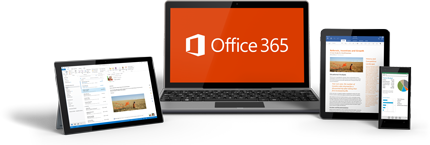How to use the Exchange PowerShell cmdlet Get-Recipient to list and export all email addresses in Microsoft Exchange.
Source : Exchange PowerShell: How to list all SMTP email addresses in Exchange – Oxford SBS Guy
How to use the Exchange PowerShell cmdlet Get-Recipient to list and export all email addresses in Microsoft Exchange.
Source : Exchange PowerShell: How to list all SMTP email addresses in Exchange – Oxford SBS Guy
The following Outlook client versions are fully supported by Exchange server 2013. Please bear in mind there’s a difference between what is supported and what might be compatible with Exchange 2013. All of the Outlook versions listed below have been thoroughly tested by the Exchange Product group:
Outlook 2013
Outlook 2010 SP1 with November 2012 Cumulative Update ( available from http://support.microsoft.com/kb/2687623 )
Outlook 2007 SP3 with November 2012 Cumulative Update ( available from http://support.microsoft.com/kb/2687404 )
Entourage 2008 for Mac, Web Services Edition
Outlook for Mac 2011
In this multi-part article we will migrate from Exchange 2010 to Exchange 2016.
Permet de créer un modèle de certificat avec une validité supérieure à 2 ans, valable pour MS Exchange et TS Gateway

Le but ici est de segmenter les carnets d’adresses , par exemple lorsque 2 sociétés partagent le même portail Office 365,e t que l’on veut que les 2 sociétés ne voient que leurs utilisateurs, groupes, ressources respectifs.
NB: les scripts de segmentation fonctionnent également pour Exchange 2010 et 2013.
Pré-requis:
source: http://www.weatherhead.net/office-365-administration-with-one-powershell-console/
https://www.microsoft.com/fr-fr/download/details.aspx?id=41950
source: http://madoxr.blogspot.fr/2010/01/increasing-number-of-simultaneous.html
By default Exchange 2010 just move 5 mailboxes simultaneously, it can make a migration of about 1500 mailboxes take 3 or more days.
To increase it you have to change a configuration file for Mailbox Replication Service.
Lire la suite « Increasing the number of simultaneous Remote/Local Move Request on Exchange 2010 »
Posted by Tim Harrington
Fact: Email Address Policies (EAPs) will apply during a mailbox move. While everyone is currently planning on their Exchange migrations to Exchange 2010 :), you will want to take some time to look at your EAPs and users that are exceptions to the policies. The last thing you want is that call right after the migration saying that my email address has changed.
suite: http://howdouc.blogspot.fr/2010/09/email-address-policies-and-mailbox.html
BY
In prior versions of Exchange an organisation that wished to restrict who could send outbound internet emails could apply the restriction on an SMTP connector. In this example emails sent to the * address space are rejected by default unless sent by a group listed in the “Accept messages from:” list, for example a group named “Internet Email Users”.
Exchange Server 2007 uses Send Connectors for configuring where outbound internet email is delivered, much like an SMTP connector in Exchange 2003 Server. However, the Send Connector is not the place to apply restrictions on who can send outbound internet email. These restrictions are instead applied with Transport Rules
suite: http://exchangeserverpro.com/restricting-outbound-email-with-exchange-server-2007-transport-rules/
by
source: http://helpdeskgeek.com/how-to/how-to-view-the-size-of-user-mailboxes-in-exchange-2007/
For example, here is the command line you would use to get a list of all mailboxes with their sizes sorted from biggest to smallest. It will also give you the number of items in the mailbox and will list the sizes in MB.
Get-MailboxStatistics | Sort-Object TotalItemSize -Descending | ft DisplayName,@{label=”TotalItemSize(MB)”;expression={$_.TotalItemSize.Value.ToMB()}},ItemCount
If the above command does not work for some reason, you can also try this one:
Get-MailboxStatistics -Database “Mailbox Database” | Sort -Property TotalItemsize | Format-Table DisplayName, LastLoggedOnUserAccount, ItemCount, @{expression={$_.totalitemsize.value.ToMB()};label=”Size(MB)”}, LastLogonTime, LastLogoffTime
BY
An Exchange Server 2010 Database Availability Group (DAG) provides several benefits to an organization, primarily that of continuous availability of mailbox databases.
To update the DAG members with new patches, update rollups or service packs, the update process should be managed to prevent all of the DAG members from being offline at the same time.